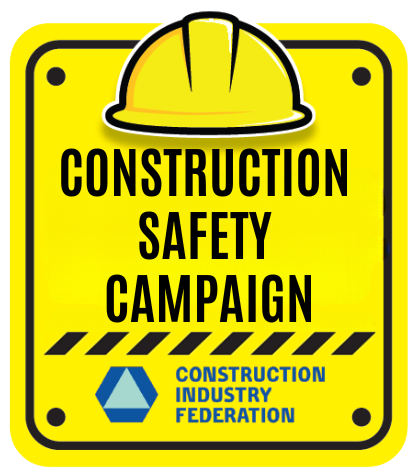Utilities
Safety Campaign 2025 – Wednesday 15th October

Back to Construction Safety Campaign 2025
Construction Safety Episode 4: Utilities
In episode 4 of the CIF Construction Safety Campaign 2025 podcast, Director of Safety, Education & Training, Sean Downey, joins Clare Kelly, Group EHS Manager with Designer Group, on site at the Celtic Interconnector.
This major infrastructure project is the first interconnector between Ireland and France that allows us to both bring in and send energy.
To paraphrase Clare Kelly: “If you do the basics well, everything else will fall into place. So, constantly trying to do the basics well: setting up correctly, having supervisors meet with their crews, and setting people up to succeed and not to fail.”
Watch the full episode below.
Live services
Contractors are responsible for managing the risks associated with work near overhead electricity wires and underground cables. Competent persons need to review past site records and utility drawings in advance of works and to liaise with the respective utility providers.
It is important to note a variance of voltages for overhead electricity lines on ESB Networks distribution and transmission systems, ranging from 230 volts to 400,000 volts. The minimum safe distances for plant and machinery are dictated by the voltage carried. It is always recommended to check the voltage carried and then consult the respective Code of Practice for Avoiding Danger from Overhead Electricity Lines
Always assume utilities as live unless otherwise confirmed; if planning work near overhead electricity wires, contact ESB Networks (1800 928 960 / [email protected]) in advance so that the necessary safety precautions can be evaluated. In the event of emergency, contact ESB Networks immediately on 1800 372 999.
Am I SAFE?
Uisce Éireann takes the view that ‘no activity is so important or urgent that it cannot be done safely’ and their contractors are encouraged to stop and think, and to ask ‘Am I SAFE?’. The approach endorsed by Uisce Éireann is as follows:
- Stop and think “What if?”
- Assess the task, work area and equipment.
- Follow the procedures and method statement.
- Engage with your Supervisor if an aspect of the task has changed and deviates from the plan.
Resources
ESB Networks – Contractor Safety
ESB Networks – Code of Practice for Avoiding Danger from Overhead Electricity Lines
ESB Networks – Safe Construction with Electricity
ESB Networks – How you can avoid hitting electrical cables when digging and drilling
Gas Networks Ireland – Dial Before You Dig (Short Animation)
Gas Networks Ireland – Dial Before You Dig
HSA – Code of Practice for Avoiding Danger from Underground Services
HSA – Guide to SHWW (General Applications) Regs, Part 3: Electricity
Construction Safety Campaign Podcast 2025
Listen to the full series on Spotify